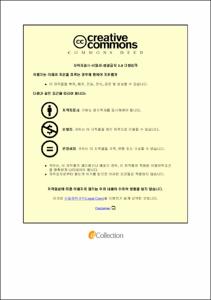Solar energy-assisted lithium-ion battery using photoelectrochromic property
- Abstract
- As an alternative to overcome a limit on the capacity of thin-battery, we have tried integrating solar energy into the battery system and improving the electrochemical properties of batteries. We refer to this concept and design as a “solar energy-assisted lithium-ion battery”. Tungsten oxide (WO3) electrode was prepared as an anode of the solar energy-assisted lithium-ion battery, and its electrochemical properties under the sunlight irradiation were measured and analyzed. Furthermore, we examined sunlight irradiation effects during lithiation/delithation. When the light was irradiated to the WO3 electrode, the capacitances were increased compared to that measured under the dark conditions. It is attributed to the photocatalytic property of WO3 that can generate photoelectrons by light irradiation. The photoelectrons improve the capacities by participating in the intercalation of lithium ions and facilitating electrons transport. The effect of light is maximized under continuous light irradiation, and the capacitances were maintained under intermittent light irradiation. This results from the accumulation of photoelectrons by light irradiation. The wide working potential of WO3 affects chemical stability under dark conditions. However, the stability of WO3 was improved by light irradiation, which is attributed to the lithiation/delithiation with a narrow working potential of WO3 due to the photogenerated electrons. We expect that this approach could provide an alternative solution to solve the battery problems which are limited by the device structure.
본 연구에서는 태양광 에너지를 활용하여 소형 에너지 저장 장치의 전기화학적 특성을 개선하고자 광감응 리튬 이온 전지(solar energy-assisted lithium-ion battery)를 제시하였다. 광감응 리튬 이온 전지의 양극으로 광흡수 성질을 지닌 삼산화 텅스텐(WO3) 전극을 사용하여 리튬화(lithiation)/ 탈리튬화(delithiation) 과정 중 빛에 따른 전기화학적 특성 변화를 측정 및 분석하였다. 또한, 태양광 조사가 리튬화/탈리튬화 과정에 미치는 영향을 파악하였다. WO3 전극에 태양광을 조사하였을 때, 전지의 용량이 태양광을 조사하지 않았을 때보다 증가하였다. WO3가 태양광 조사에 의해 광전자를 생성하여 전극의 전기화학적 특성에 영향을 주기 때문으로 해석된다. 태양광 조사에 의해 생성된 광전자가 리튬 이온의 삽입(intercalation)에 사용되어 전지의 용량을 증가시킬 수 있을 뿐 아니라, 전극의 전자 수송을 촉진하여 용량이 향상되는 것으로 여겨진다. 빛의 효과는 지속적인 태양광 조사 시 극대화되고 간헐적인 태양광 조사에서도 전지의 용량은 유지되었다. 이는 태양광 조사에 의해 생성된 광전자가 축적된 결과로 해석된다. 리튬화/탈리튬화를 반복하여 진행하면 태양광을 조사하지 않았을 때 WO3는 상대적으로 큰 작동 전위로 인해 화학적 안정성에 영향을 미친다. 반면, 태양광을 조사하였을 때 WO3는 생성된 광전자로 인해 작은 작동 전위로 리튬화/탈리튬화가 일어나 전극의 안정성이 향상되었다.
- Issued Date
- 2021
- Awarded Date
- 2021. 2
- Type
- Dissertation
- Publisher
- 부경대학교
- Alternative Author(s)
- 김태희
- Affiliation
- 부경대학교 대학원
- Department
- 대학원 화학융합공학부
- Advisor
- 박이슬
- Table Of Contents
- I.Research background 1
1.Principle of lithium-ion battery 1
2.Principle of a photocatalyst 4
3.Photoelectrochromism 6
II.Solar energy-assisted lithium-ion battery using photoelectrochromic property 7
1.Introduction 7
2.Experimental method 10
2.1.Electrode preparation 10
2.2.Characterization and (photo) electrochemical measurements 15
3.Results and discussion 18
3.1 Electrochemical measurement 18
3.1.1. X-ray diffraction (XRD) measurements 18
3.1.2. Galvanostatic charge and discharge 20
3.1.3. Cyclic voltammograms measurements 26
3.1.4. Electrochemical impedance measurements 30
3.2. The working mechanism of the solar energy-assisted lithium-ion battery 34
3.2.1. Kinetic analysis of the electrochemical behavior of WO3 34
3.2.2. Light irradiation effects 40
3.2.3. Lithium ion incorporation energy barriers on WO3 45
3.3. Electrochemical performance 47
3.3.1. Rate performance 47
3.3.2. Long-term cycling performance 52
4. Conclusion 56
5. References 58
- Degree
- Master
- Files in This Item:
-
-
Download
 Solar energy-assisted lithium-ion battery using photoelectrochromic property.pdf
기타 데이터 / 3.92 MB / Adobe PDF
Solar energy-assisted lithium-ion battery using photoelectrochromic property.pdf
기타 데이터 / 3.92 MB / Adobe PDF
-
Items in Repository are protected by copyright, with all rights reserved, unless otherwise indicated.